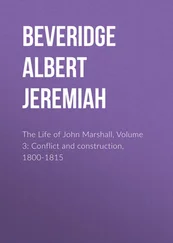This conception of a collocation’s form and meaning dimension amount to the following hypotheses
1 Depending on the functional and semantic properties of this constituent and the slot it is used in, the actual manifestation of a collocation can be regarded as usual (total fit), creative (only the major definition elements fit) or inappropriate (one or more defining elements contradict each other).
2 Evaluation and understanding of a collocational construction are the results of a usage-based acquisitional process and, therefore, depends on linguistic experience and proficiency.
Picking up on Siepmann’s caveat that “[…] semantic relationships can only be discerned post hoc […]” (Siepmann 2005: 432), this approach towards collocations, of course needs to address the general question whether a semi-lexical constructional level of collocations is cognitive reality in the first place or rather an additional descriptive dimension for lexicographic purposes. Admittedly, the close interdependence of constructions makes it difficult to examine each and every level of an utterance separately, especially when the object under investigation is neither purely functional nor a simple sum of individual word meanings. Since lexical variability is by definition the heart of any semi-lexical constructions, it might, however, make sense to keep the investigated items constant and vary the cognitive reality. In other words: if speakers of a language with a similar cognitive background are clearly influenced by the meaning of a semi-lexical construction while others are not, this might suggest that this additional dimension of meaning is cognitively real, at least for a certain group of speakers. In this context a comparison between native speakers of English and speakers of English with a non-native language background seems to be the obvious choice, but differences between the perception of children and adults or between non-native speakers of English with different learning experiences might also provide useful insights into the mental mechanisms which are at work once someone processes a collocation. This preliminary working definition of collocation presupposes that all collocational combinations share the same constructional nature. It furthermore defines creativity as a natural aspect of human cognition. Yet, the degree to which creative readings are supported by a potential constructional meaning needs further clarification, as does whether contextual factors play a role in the perception of collocational combinations. Thus, to create a comprehensive model of collocations which accounts for creativity within collocations in general as well as potentially different levels of creative alternations, the cognitive dimension of creativity and its consequences for the concept of collocation need to be discussed in more detail (> 3). Chapter 4 will then combine these implications with more general thoughts on language acquisition, in order to form a comprehensive model, which then will be put to the test in subsequent chapters (> 6; 7).
3 Collocations and Creativity
Establishing and maintaining a balance between formulaicity and creativity seems to be essential for successful acquisition, but in taught adults, this is difficult to achieve, with the learner most often erring on the side of too much creativity.
(Wray 2002: 148–149)
As the previous chapter showed, the observation that even phraseologically fixed items such as idioms or collocations can be subject to change was already part of early linguistic work on these aspects. Palmer and Hornby present different, at times antonymous, NP-collocates in their collection for Thousand-Word English , for a verb like do , for example, they include “do good, harm, etc.” (Palmer/Hornby 1937: 43). Later, Cowie even uses the number of lexical choices within a collocation as a defining feature of his categorization (> 2.2; Cowie/Howarth 1995). Also more context-oriented approaches, like most of Sinclair’s corpus-based studies, take into account that there is more than one option for a collocate to be realised (> 2.1). So, while variation and a varying degree of fixedness have been part of collocational studies almost since the very beginning, it is interesting to note that the conclusions drawn from these observations have mostly been very pragmatic: the different forms of collocational variation were acknowledged as a defining, yet unpredictable, feature and hence not analysed any further. Some publications, however, have gone beyond these rather straighforward observations. Concepts like lexical sets (Halliday 1966), semantic prosody (Sinclair 1996, 1998, 2004; Louw 1993), commutability (Howarth 1996), lexical priming (Hoey 2005) and exploitations (Hanks 2013) all account to varying degree for the fact that variation in collocations is not only possible but can also lead to further implications. This chapter will discuss a selection of more traditional views on collocational variation (> 3.1). It furthermore discusses how these observations can be interpreted against a cognitive linguistic background (> 3.2), showing in more detail how creative variability could support a constructional perspective on collocations.
3.1 Creative Variation of Collocations
Combinatorial unpredictability has frequently been regarded as a defining feature of collocations (> 2; Howarth 1996; Hausmann 1984; Palmer 1976). However, in allowing for variation, the question is, what exactly is an unpredictable combination? This is usually answered ex negativo by contrasting native speakers’ evaluations or corpus data with combinations which in terms of general semantic understanding of a lexeme and its semantically related units (such as hyponyms, co-hyponyms, hyperonyms, and synonyms) should be both possible and acceptable. If these combinations then do not or only rarely occur in a corpus or are rejected by a group of native speakers for no apparent reason, this is often referred to as unpredictable combinatorial behaviour. A variation, on the other hand, is then its positive equivalent, namely, semantically related words which are possible as well as accepted and hence can share the same collocate. To account for the fact that these variations belong to the same item, Halliday introduced the term lexical set , which refers to a group of these words (Halliday 1966: 152–153). Take for example the following instances of pretty :
| (16) |
BNC JYA 2304 |
Lina was a pretty girl, with a totally natural smile and tangled dark curls. |
| (17) |
BNC BN1 644 |
The poor young woman, a pretty creature, flushed scarlet and said […] |
| (18) |
BNC CAD 3130 |
If you take away the image all that's left is a bunch of exceptionally pretty boys making some very ordinary music. |
| (19) |
BNC ANK 1635 |
You are a pretty boy, isn't he a pretty boy, Bob? |
Girl , woman , and boy could be seen as co-hyponyms of the hyperonym human beings , as such, they share a considerable amount of features, in fact from a structural semantics point of view, their only discerning components would be ± ADULT, for girl / woman , and ± FEMALE, for girl / boy . Yet sentences (16) and (17) might be the only undisputable “natural” co-occurrences here, belonging to the lexical set of [ pretty +N], while (18) and (19) seem to be somewhat special, if not strange. Therefore, Frank Palmer argues in the first edition of Semantics (1976: 97) that any phrases which contain a noun and pretty as its collocate should be seen as an idiosyncratic combination, as the adjective does not co-occur with every noun but is restricted in its combinatorial behaviour. Of course, including ‘+female’ in the word’s definition would easily explain why lexemes with a (potential) female reading are more likely to collocate with pretty , but Palmer dismisses this thought as “rather perverse” (Palmer 1976: 96). However, in the second edition he admits:
Читать дальше
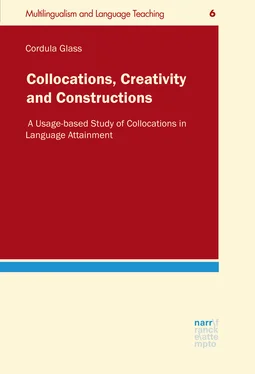

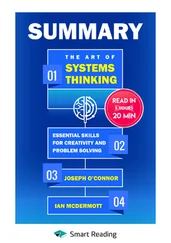

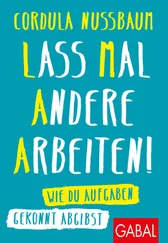

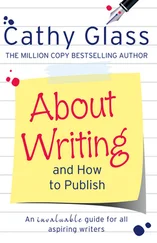

![Chade-Meng Tan - Search Inside Yourself - Increase Productivity, Creativity and Happiness [ePub edition]](/books/703803/chade-thumb.webp)


